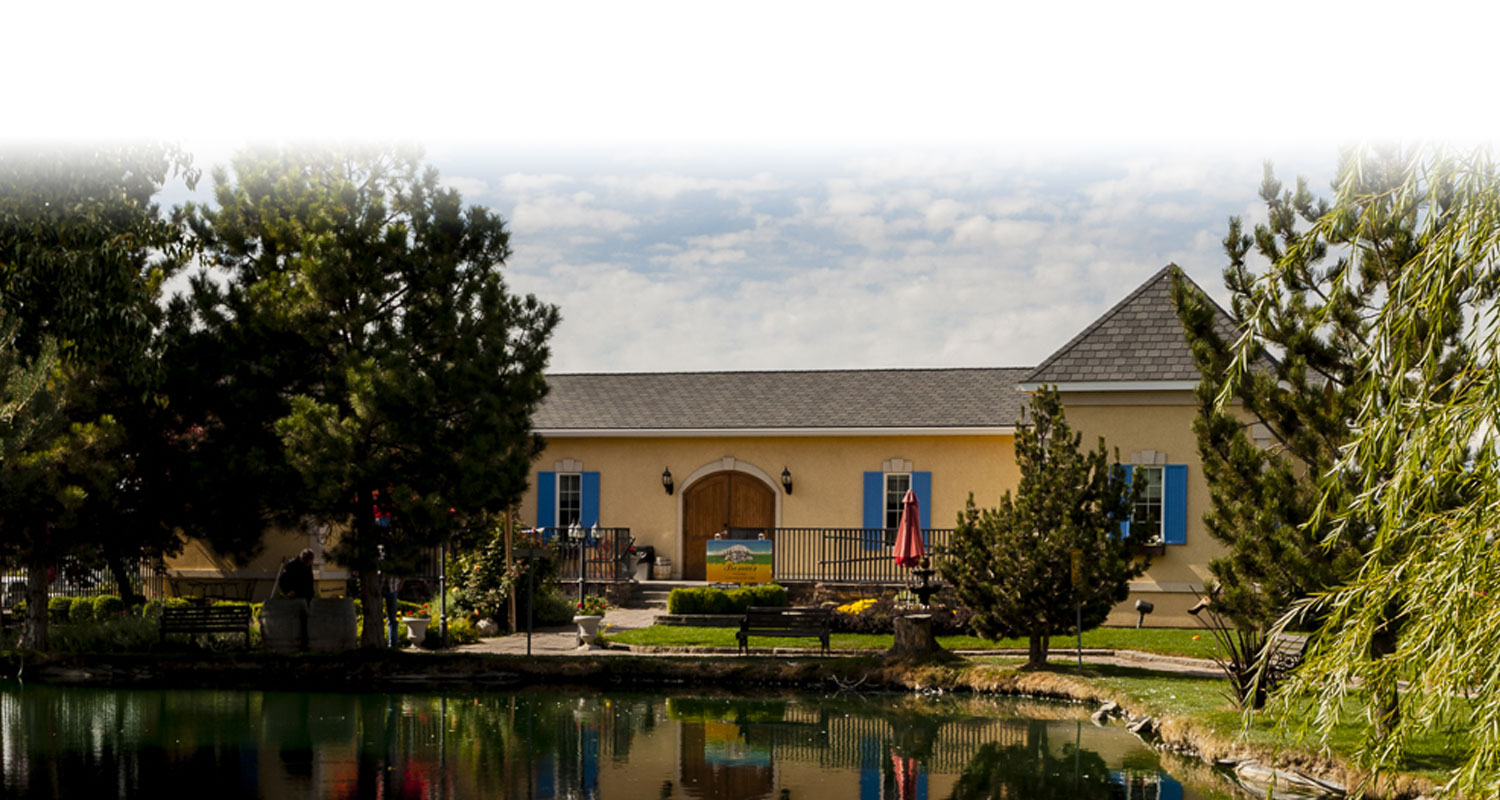The Rattlesnake Hills AVA
Don’t Worry. No Snakes, Just Great Wines
The Rattlesnake Hills AVA, which begins just outside of Union Gap, ends in the town of Outlook in the Yakima Valley. With its rich soils, long days and warm climate, the Rattlesnake Hills AVA produces world-class wine grapes that make some of Washington State’s finest wines.
As a growing region, Rattlesnake Hills is almost evenly split between red and white wine grapes with reds having a slight edge. Riesling is the most planted grape followed by Merlot and Cabernet Sauvignon, but vineyards in the AVA grow 40 different varities of wine grapes.
In terms of Riesling, cooler sites tend to produce aromas and flavors of lime, lemon, and green apple. In warmer sites this turns to stone fruit, particularly peach. Merlots are notable for red fruit aromas and flavors, such as sweet cherries, red currants, and raspberries, along with chocolate and mint. For Cabernets, black cherry, cassis, and light, high-toned herbal notes are often the hallmarks.
The east-west trending Rattlesnake Hills are an anticline of the Yakima fold belt, a series of geologic folds that define a number of viticultural regions in the area. The appellation itself lies on the south slope of the Rattlesnake Hills and includes the highest point in the Yakima Valley AVA.
The Rattlesnake Hills’ distinguishing feature is its elevation relative to the surrounding area. Elevations range from 850 feet to 3,085 feet, although vineyard plantings are limited to the lower-lying areas. The appellation’s heightened elevation lessens the risk of spring and fall frosts. Additionally, winter temperatures are warmer than the surrounding area, limiting the danger of hard freezes.
The predominant soil types in the Rattlesnake Hills AVA are silt-loam and loam. Notably, vineyards at higher elevations are above the levels of the Missoula Flood, a series of cataclysmic events that define much of the Columbia Valley growing region.
A sub-appellation of the Yakima Valley (itself a sub-appellation of the Columbia Valley), the Rattlesnake Hills has an arid, continental climate and receives an average of 6 to 12 inches of rainfall annually. Irrigation is therefore required to grow vinifera grapes.
The earliest vines at Rattlesnake Hills were planted in 1968.
Temperate Climate
Several factors distinguish the Yakima Valley wineries that can be found in the Rattlesnake Hills area from others in the Valley. Temperature: The Rattlesnake Hills has 2,683 to 2,870 annual degree days, which is temperate compared to the surrounding regions. Soils: Fine, shallo to silt loam soils left over from the ice age are the norm here. Climate: The Rattlesnake Hills ridgeline shields the grapevines from the freezing polar air from Canada that can severely damage or kill grape vines.
About the AVA
The Rattlesnake Hills AVA (American Viticultural Area) is the ninth federally recognized AVA in the country. It is entirely contained within the Yakima Valley AVA, which in turn is entirely contained within the larger Columbia Valley AVA.
The hills form the northern boundary of Yakima Valley, and the AVA includes land between the north bank of the Sunnyside Canal and the entirety of the southern slopes of the Rattlesnake Hills between Outlook and the Wapato Dam.
Vital Statistics
- Established in 2008
- 56% red to 44% white
- Located approximately four miles southeast of Yakima, the 68,500 acres AVA has 1,747 acres under vines.
- With some 25 wineries and 29 vineyards, it provides many Washington producers with Cabernet Sauvignon, Malbec, Merlot, Syrah, Chardonnay and Riesling.
- Encompassing an expanse of hills running east to west along the northern point of the Yakima River and south of Moxee Valley, the Rattlesnake Hills AVA lies within both the established Columbia Valley and Yakima Valley appellations.
- Beginning at an elevation of 850 feet and rising up to 3,085 feet, the viticultural area sits higher in elevation than the surrounding Yakima Valley region.
- Named after the Northern Pacific Rattlesnake
- The first commercial vineyards in the region date back to 1968.
- Vineyards are typically located on ridges and terraces and in areas with good air drainage to avoid late spring and early fall frost and winter kill.
Rattlesnake Hills Wine Trail
Within the Rattlesnake Hills AVA, 11 wineries have formed what they call the Rattlesnake Hills Wine Trail. Most of the wineries on the Wine Trail are located on estate vineyards offering picturesque views complete with the snow-capped peaks of Mount Adams and Mount Rainier.
Centered around the town of Zillah, the Wine Trail is just two to three hours from Seattle, Spokane and Portland. This area of Eastern Washington boasts over 300 days of sunshine each year, which, of course, pairs nicely with a world-class bottle of wine.
The 11 wineries on the Rattlesnake Hills Wine Trail are: Bonair Winery, Horizon’s Edge Winery, Hyatt Vineyards, Maison de Padgett Winery, Paradisos del Sol, Portteus Winery, Severino Cellars, Silver Lake Winery at Roza Hills, Tanjuli Winery, Two Mountain Winery and VanArnam Vineyards. All 11 wineries are located in Zillah and can be easily accessed from Exits 50, 52 and 54 along Interstate 82.
Wine Trail Passport
For a fee of $10, you can purchase a Rattlesnake Hills Passport, which can be used all year long. The Passport entitles you to benefits and discounts at all 11 wineries. Benefits include a descriptive booklet about the Wine Trail and a
Wine Trail Map.
You can purchase a Passport at:
- The Yakima Valley Visitors Center, just off I-82 East Exit 33a; I-82 West Exit 30. For Visitors Center Hours call (509) 573-3388.
- The first winery that you visit along the Trail in Yakima.
- Or Purchase your Passport online for only $10 each plus shipping. To purchase your Passport online, visit www.rattlesnakehills.org. On the Home Page of the site, scroll down to where it says, “Connect with Rattlesnake Hills Wine Trail, then click on the words: “Purchase Your Wine Trail Passport.”
Outside of the Wine Trail, there are many other wineries in the Rattlesnake Hills AVA. They include Andrew Will Winery, Cote Bonneville (DuBrul Vineyard), Cultura Winery, Knight Hill Winery, Masset Winery, Owen Roe Winery, Sheridan Winery, and Treveri Cellars.
Vineyards in the Rattlesnake Hills AVA include the Morrison Vineyard, planted in 1968 to Riesling and Cabernet Sauvignon for Chateau Ste. Michelle. It is the oldest vineyard in the AVA. In the late 1970s and early 1980s, the Hyatt Vineyard, Whisky Canyon, Outlook, and the Portteus Vineyard were also planted. Many of the wines from other regions across the state are made with grapes that come from the Rattlesnake Hills AVA.
You can learn more about the Rattlesnake Hills AVA by visiting the following websites: www.rattlesnakehills.org and www.rattlesnakehills.com.


